When was the last time you thought, “I really want to sit in a waiting room today?” Probably never. Yet this is an inescapable part of most doctor’s visits.
Thankfully, technology is changing the way we interact with hospitals, doctors, and therapists. Advances have made it possible to visit the doctor from the comfort of your home. Medical practitioners can even obtain accurate patient data through biometric sensors.
Telemedicine is a force for good. But, like anything, it has its strengths and weaknesses. In this post, we’ll discuss the advantages and disadvantages of telemedicine for both patients and providers.
Just so you know
You’ve got your medical toolkit ready to help those in need — but what about your telemedicine toolkit? With Jotform’s HIPAA-friendly telehealth platform, you can easily create online medical forms that keep sensitive health data safe.
9 compelling reasons to use telemedicine
1. It helps hospitals provide better treatment for remote patients. Since telemedicine isn’t tied to a facility, doctors can treat patients no matter where they are as long as they have a reliable internet connection.
2. It improves communication between patients and specialists. By enabling video interaction between patients and doctors, follow-up visits become easier. And when it’s easier to attend a visit, the less likely it is that patients will cancel.
3. It gives time back to both patients and doctors. Think about how long your last doctor’s appointment took. Even if it was only 30 minutes long, you probably had to take a half-day off of work for travel and waiting. Virtual visits save valuable time for both doctors and patients by allowing visits from any location — no travel required.
4. It limits the exposure patients have with other sick people. This is great for those with fragile health or autoimmune diseases who can’t rely on their weakened immune systems to fight off illnesses they may be exposed to when out in public. And in the age of COVID-19, this is invaluable.
5. It helps doctors quickly handle straightforward medical problems. Telemedicine can free up doctors to handle more complex cases and reduce the time patients have to wait to see their doctors.
6. It reduces no-show costs. Telemedicine reduces the cost of each visit. Because the cost of each visit is lower, no-shows are less harmful to the practice’s bottom line.
7. It expands your medical practice’s client base. Removing the limitations of a physical office means that your practice can extend its reach and provide services to those in remote locations.
8. It provides a competitive advantage over other practices. Telemedicine is still growing, which means providers that embrace the technology early will have an advantage. It’s unlikely that telemedicine will lose its appeal, and those who fail to adapt will likely fall behind.
9. It enables working from home. Telemedicine gives doctors more flexibility with their work location and allows them to incorporate more work-from-home days into their routines.
8 things that make telemedicine a challenge
1. It may require new equipment. While the barrier to entry with telemedicine continues to drop, it still requires an investment in some technology. The added expense can turn away some healthcare providers.
2. It may be harder to create a personal connection. For both patients and providers, the additional separation that telemedicine creates makes it hard to form a personal connection. This can be a drawback for those looking for a family doctor.
3. Not all illnesses can be diagnosed remotely. Many telemedicine options work better for simple issues or routine check-ins.
4. Technology can fail. No matter how good your technology is, it’s not immune to internet outages, overloaded servers, and incompatible client hardware. To be fair, there are things that can go wrong with an in-person visit, but technology adds an extra factor that providers need to consider.
5. There are regulatory hurdles. The speed at which new technology is developed can make it a challenge to ensure organizations follow regulatory requirements. Keeping up with requirements like HIPAA and HITECH is a big part of staying compliant.
6. There could be a lack of interoperability with EHR systems. Another hurdle healthcare providers face is getting telemedicine to fit into their current workflows. Finding products that don’t require you to change the way you work, like Jotform’s HIPAA-friendly forms, is invaluable.
7. It requires additional training. Because telemedicine requires new technology, you’ll need to train your staff and patients on how to use it. Training can be both costly and time-consuming for providers.
8. There may be a lack of adoption. Patients might not use telemedicine because they have a hard time with new technology, aren’t aware of their options, or simply because of miscommunication. Providers may worry that if patients don’t use their telemedicine options, they’ll have wasted valuable time and money.
Just so you know
If your organization is fighting against COVID-19, you can apply for a free, unlimited, HIPAA-friendly Jotform account with our Coronavirus Responder Program.
Don’t let the cons scare you away
There are disadvantages to telemedicine, but there are many things providers can do to counter them. Analyzing which aspects of your healthcare practice can benefit the most from telemedicine technology can help you prioritize your investment.
In addition, by rolling features out gradually, you can help your employees and patients learn at their own pace. This will make them more likely to embrace new technology.
Why not start by upgrading the way you do paperwork? Jotform’s online forms are both HIPAA-friendly and easy to use. Try them today, and make collecting PHI a breeze.














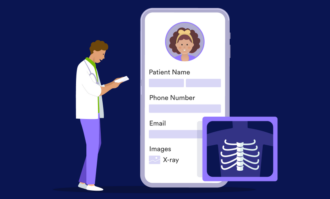



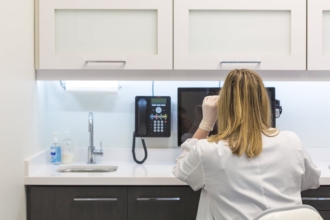






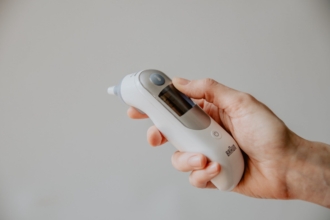











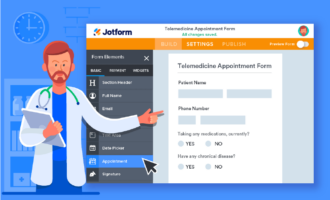

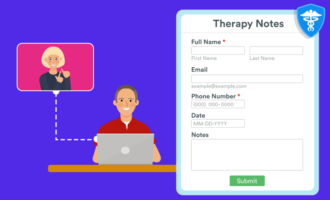








Send Comment:
3 Comments:
More than a year ago
Great article! Telemedicine can have its own set of drawbacks such as limited supervision, very poor avenues to sue for wrong diagnosis or treatment. the guidelines for misuse only offer a slap on the wrist to offenders and they are not even suspended easily. This means that patients have lesser protection and will be more hesitant to use it. Strong legislation and enforcement are the solutions. Visit:
More than a year ago
Well done
More than a year ago
You made a good point when you said telemedicine is helpful when it comes to follow-up check-ups since it's more convenient, which means patients will less likely cancel their appointments. Moreover, it provides excellent communication between doctors and patients. My friend Abby needs to see a doctor soon because of her abdominal pain. I'll share this with her so she'll opt for a doctor who offers telemedicine services. Thanks.